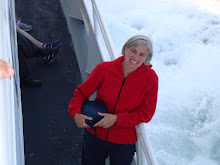KN: In your fantastic back matter, you note that so far scientists have discovered more than 5,000 different species of frogs. A Place for Frogs features 12 different species. How did you decide which 12 frogs to include?
MS: Whittling down frog possibilities until I ended up with that perfect core group was half the challenge of researching the book. The endpapers of the book feature range maps that show where each frog lives. I wanted to be sure that no matter where a reader lives in North America, there would be at least one frog in his or her area. For the most part, there are at least two frogs in each geographic region.
I also wanted to include some large frogs and some small frogs, some toads and some tree frogs, some common frogs and some rare ones. Also, I need to think about what the illustrator, Higgins Bond, would show in her paintings. I needed diversity in habitats and settings too.
And, of course, each frog I discuss faces a different environmental challenge, and that challenge is being successfully addressed by people. Focusing on problems that people, including kids, can and are doing something about helps to make the book more positive, more hopeful. I’m hoping this book and it’s companions, A Place for Butterflies [link: http://melissa-stewart.com/books/insects/bk_plac1.html] and A Place for Birds [link: http://melissa-stewart.com/books/birds/bk_place.html] help to promote environmental stewardship.
KN: Another back matter feature I love is the Fascinating Frog Facts. Would you please share one of those facts with our readers? Also, I know you feature Friday Fun Facts on your blog. Could you include a link to one of those posts for our inquisitive readers?
MS: Kids love fun, weird, wacky, gross, and goofy facts, so I try to include them as much as possible. I want kids to say, “Oh, wow! That’s cool. Science is cool.” My favorite fact from the back matter of A Place for Frogs is “Harlequin frog tadpoles only eat one kind of food—extra eggs laid by their moms.” Talk about cannibals!
You’re right, Kate. I do often include five fascinating facts on my blog on Fridays. In this [link: http://celebratescience.blogspot.com/2010/05/friday-fun-five-gross-and-goofy-body.html] post, I’ve listed facts about ears and hearing, and this [link: http://celebratescience.blogspot.com/2010/03/friday-fun-five-gross-and-goofy-body.html] post includes some pretty surprising facts about spit. These are pulled straight out of a series of books I wrote called Gross & Goofy Body [link: http://melissa-stewart.com/books/series/bk_gross.html]. Six of the books were published last fall, and six more will come out in September.
I always include five facts because some teachers have told me that they like to use the facts to refresh the science center in their classrooms. The five facts I offer on Friday mornings give teachers a different fact for each day the following week.
KN: The structure of the book features an environmental problem that affects frogs and ecosystems, and then you offer a solution. When writing fiction, authors of all ages are encouraged to have their main character encounter a problem and find a solution. What inspired you to use a similar format for this non-fiction series?
MS: Hmm, the parallel that you draw to fiction is very interesting. I’d never considered that. I chose the problem/solution format for each spread because while I was writing the first book, A Place for Butterflies, I was also working as a substitute teacher. One day at lunch, I overheard two teachers discussing the difficulty of teaching their students the concept of cause and effect. They said they wished there were resources for them to use. I had that conversation in mind as I developed the structure for the book’s main text.
Substitute teaching also exposed me to a popular program called Reading Buddies, in which a first or second grader who is just learning to read is paired with a third, fourth or fifth grader. Both students gain from this partnership. The younger child develops his/her reading skills, and acting as a mentor builds the self-esteem of the older child.
Most Reading Buddies programs use books written at the reading level of the younger child. I thought it would be even better if each spread featured text at two different levels. In the A Place for books, simpler main text is perfect for the younger child. The sidebars can be read by an older child (or a parent or teacher), and then the two buddies can look at the art and discuss the content together.
Whenever I write a book, I always think about its applications in the classroom when I am developing the structure and organization as well as the language.
KN: In the process of researching this book, did you become inspired to take a specific action yourself to help protect frogs? If so, could you tell us what you did?
MS: One spread in the book features wood frogs crossing a road (from the woods where they hibernate to the vernal pool where they mate and lay eggs) on Big Night—the first warm, rainy night of spring. Even before I started researching this book, I knew I wanted to include this example. I’ve been participating in Big Night amphibian rescue efforts in Central Massachusetts for almost 10 years. Of course, it’s important to help the frogs and salamanders, but I also really love watching how excited the kids are by the spectacular migration and how proud they are to be helping.
KN: Is there anything else you’d like to tell us?
MS: Thanks, Kate, for featuring my book and this interview on Classroom Book of the Week. I really like the creative activities you have come up with. If teachers are interested in more activities related to A Place for Frogs, they can find a Curriculum Guide on the Teacher Page of my website: www.melissa-stewart.com
KN: Thanks so much for the interview.
Subscribe to:
Post Comments (Atom)

No comments:
Post a Comment